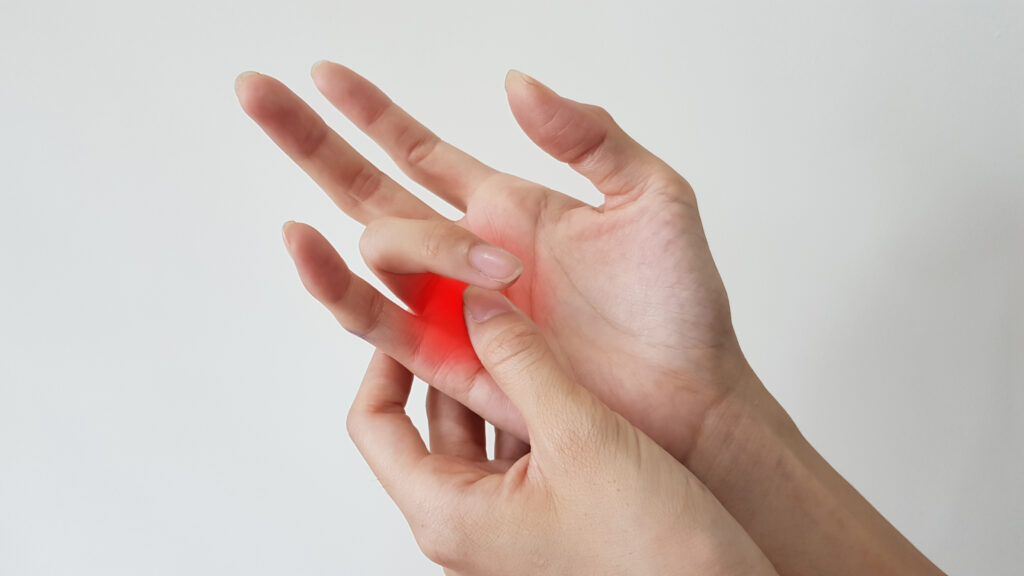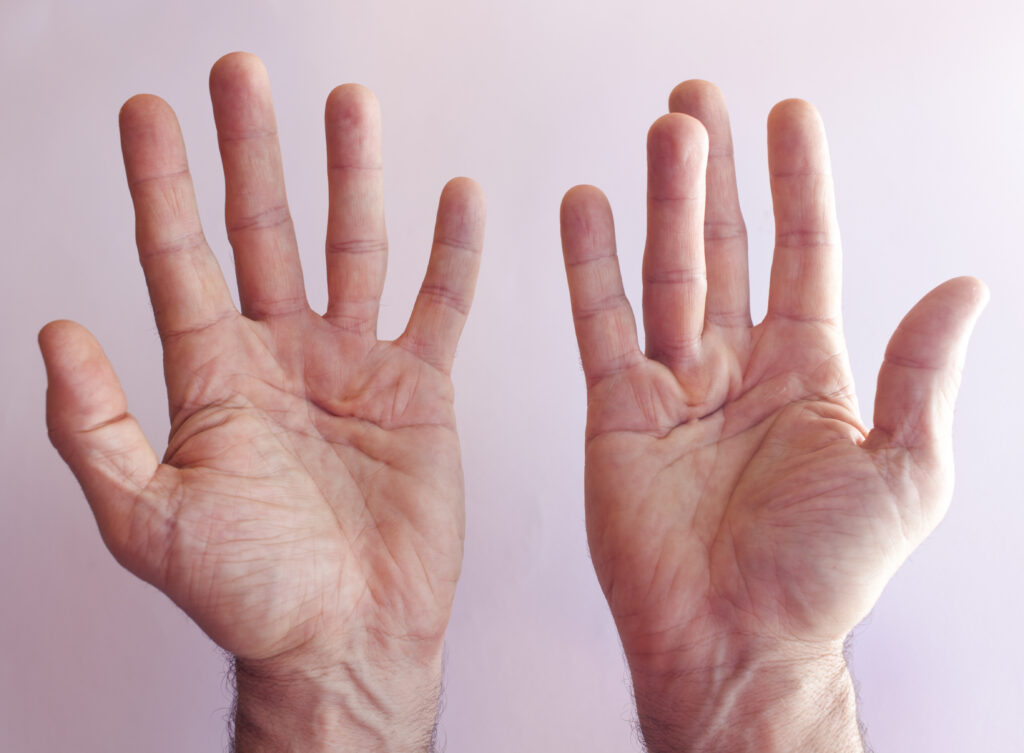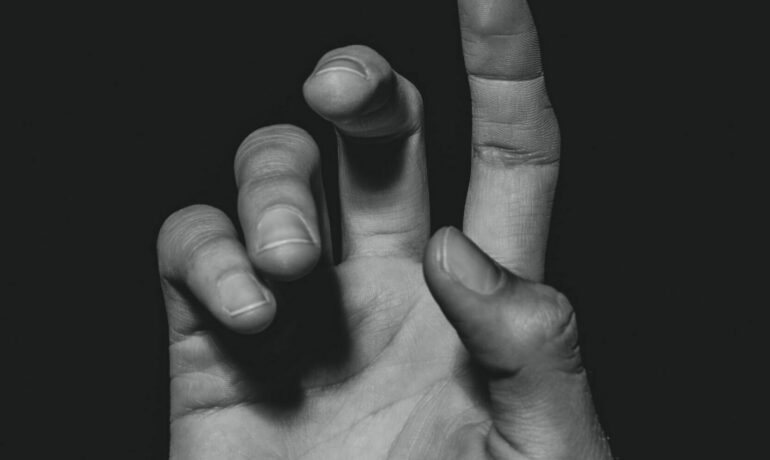Trigger finger and Dupuytren’s contracture are two conditions that affect the fingers. As both conditions share some symptoms, the two often get confused with the other. Read on to learn the key differences between trigger finger vs Dupuytren’s contracture so you can learn the right course of treatment.
The Key Differences Between Trigger Finger vs Dupuytren’s Contracture
Let’s start by saying that the conditions are different. Upon a quick first glance, they may seem similar, but medically they are different conditions.
What is Trigger Finger?
Trigger finger affects the tendons and is usually the result of a finger injury. You typically see trigger finger in the thumb and ring finger, but it can occur in other fingers too. When you have a trigger finger, you tend to have a finger that doesn’t bend or straighten properly. It can feel like the finger is “locked” in either a bent or straightened position.

Dupuytren’s Contracture
Although finger-related, Dupuytren’s contracture is very different. This condition involves the tissue in the palm of the hand, not the tendons. Typically it occurs in the ring and pinky fingers. But, again, it can occur in other fingers too. In this condition, you may experience some or all of the following symptoms:
- Can’t straighten the ginger
- Finger starts to contract into the palm (this could be over months or years)
- Tender lumps in the palm of the hand
While you may spot that there is some overlap in symptoms, a huge difference between the two conditions is the area affected. Because each condition is different, the treatment options will depend on which one you have.

Treating Trigger Finger and Dupuytren’s Contracture
Trigger Finger Treatment
Trigger fingers occur when your tendon is inflamed. The inflammation causes the sheath to swell, and this is what stops the finger from gliding smoothly as it should. Treating a trigger finger is relatively straightforward. Depending on the severity of the case, treatment options include:
- Trigger finger splint
- Cortisone injections
- Oral medications to reduce inflammation
- Trigger finger release surgery
What Will Happen if a Trigger Finger is Not Treated?
Trigger finger may get better without treatment. But if it isn’t treated, there is a chance that the finger could get worse or become stuck. There are several treatment options available for trigger finger, so it’s important to get it checked by a doctor so that it doesn’t get worse.
Dupuytren’s Contracture Treatment
Dupuytren’s contracture isn’t as straightforward to treat as a trigger finger. Doctors typically recommend hand surgery because of the way the condition affects a person’s ability to use their fingers. The surgery is performed in an outpatient setting. After the surgery, you wear a splint for about a week. Usually, it’s recommended that you take part in hand therapy afterward to get the finger motion back to normal.
Hand Surgery: Trigger Finger vs Dupuytren’s Contracture
While these two conditions may have similarities, the cause, area affected, and treatment route are very different. Seeing an expert is crucial for getting the right treatment. It’s always a good idea to speak to a medical professional before symptoms become severe.
If you’re experiencing trigger finger vs Dupuytren’s contracture symptoms, book a consultation today at the Harley Clinic to talk about your treatment options.













